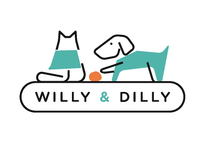What Foods Are Bad For Dogs?
Contrary to what your dog may want you to believe, some foods are very unsafe and toxic for them. Feeding your dog unsafe foods can result in illness, multiple trips to the vet, surgery and even fatality. We are all dog-lovers here and we only want the best for our pooches! So let’s tuck in and find out what foods we should avoid feeding our dogs and the healthier alternatives they can enjoy, risk-free.
Chives, Onion and Garlic
This onion-family food group should be avoided in your dog’s diet. Consumption of chives, onion and garlic will leave your dog with irritation in their intestines and painful gas. It can also cause longer effects of damage to your dog’s red blood cells which can’t be spotted right away, leading to the chances of more difficult problems in your dog’s future.
Chocolate
Perhaps the most commonly known toxic food for a dog, chocolate. Chocolate is toxic for dogs due to its high percentage of a stimulant called ‘theobromine’. Whether it’s a small amount or large, chocolate can quickly cause kidney failure in dogs and other animals so it must be avoided at all costs in your dog’s diet. Chocolate isn’t a treat for dogs as it is for humans, it’s life-threatening.
Foods with Sweeteners especially “Xylitol”
Human foods often contain sweeteners that are bad for dogs such as Xylitol. Xylitol is found in gummies, fizzy drinks, chewing gum and some brands of peanut butter. Your dog should avoid eating foods with artificial sweeteners in them as it can cause an increased heart rate, blood clotting and liver failure. Always check the label to see if the peanut butter you may treat your dog to contains any sweeteners. Try to opt for an organic spread instead or one that contains no extra sweeteners or salts.
Alcohol and Drugs
In no way should you give your dog alcohol or drugs, unless they have been prescribed by a professional veterinarian to treat your dog’s condition i.e. as pain medication. Alcohol and drugs can cause your dog to have lifelong issues with its bowls, stomach and nervous system.
Cooked Bones
Raw bones are OK for some dogs to eat as they are soft and flexible but you should not allow your dog to eat cooked bones e.g. ribs or chicken carcass. Cooked bones can splinter with a dog gnawing on them and small parts of the bone can get stuck in their airways and intestines. This makes life very uncomfortable for your dog as they will struggle to breathe and pass normal bodily functions. In the worst case, a part of a cooked bone can perforate your dogs’ internal organs which can, unfortunately, lead to fatality.
Grapes, Raisins & Avocado
Naturally sweet, grapes, raisins and avocado should be left out of your dog’s diet. Grapes, raisins and avocado are known to upset a dog’s stomach due to their high fat and sugar content. Over time, the ingestion of grapes, raisins and avocado can lead to liver and kidney failure.
Large Hard Rinds
Dogs aren’t always the best at chewing their food before swallowing. Large hard rinds such as a cob of sweetcorn can become lodged in your dog’s throat or stomach and can require surgery to have it removed. Feeding your dog large hard rinds isn’t worth the risk of fatality.
Safe Alternative Snacks for Dogs
Here’s a helpful list of the foods that are safe for your dog to eat in controlled portions:
Carrots either raw or cooked
Plain, unsalted peanut butter in small amounts
Eggs, either raw or cooked (if feeding your dog raw egg be sure to clean up appropriately to stop the spread of salmonella)
Fish, including tuna, salmon, cod, sardines and whiting
Cheese, in limited amounts
Pineapple, in small amounts
Watermelon, in small amounts
Bread, plain and in small amounts
Green Peas, fresh or frozen
Oatmeal, plain in small amounts
Apple, in small amounts (avoid feeding apple seeds to your dog as these are toxic)
Natural and Low in Fat Healthy Treats, in controlled amounts.
What To Do If Your Dog Has Ate Something Bad
If your dog has ingested foods that are unsafe the best thing you can do is to take them to your local vet to check that they are OK. Offer your dog water and fresh air to see if this makes them more comfortable until you can get to the vet’s office or during the time that the vet is travelling to you.
The best food you can feed your dog includes fresh food, low fat, low sugar and low carbohydrates. If you are ever unsure of the food you’d like to feed your dog, have a quick look online before giving it to them or ask your vet. Your dog’s healthy tummy will thank you!
Related Blog: How Much You Should Feed your Dog
